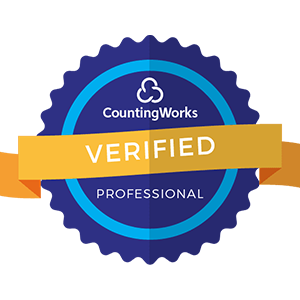Introduction
The global shift to remote work has transformed the way companies operate, making virtual onboarding a crucial process for integrating new hires into organizations. As remote work becomes the new norm, creating a virtual onboarding experience that fosters connection, engagement, and a sense of belonging is essential. This article explores key strategies and best practices for developing a successful virtual onboarding program that ensures new employees thrive long-term.
The Importance of Virtual Onboarding

Virtual onboarding is not just about video calls and online training modules. It is a strategic opportunity to immerse new hires in a company’s culture, values, and mission. A well-designed program can:
- Reduce new hire turnover: A strong onboarding experience increases new hire retention by 82% and productivity by over 70%, according to Glassdoor.
- Boost employee engagement: Engaged employees are more productive, innovative, and loyal. Virtual onboarding lays the foundation for sustained engagement by fostering a sense of connection.
- Accelerate time-to-productivity: By equipping new hires with tools, knowledge, and support, virtual onboarding helps them contribute to organizational goals faster.
The Four Pillars of Effective Virtual Onboarding
To create a virtual onboarding experience that connects and engages new hires, focus on these four pillars:
-
Connection
Building meaningful connections in a remote environment is vital. Strategies include:
- Assigning an onboarding buddy: Pair new hires with experienced employees for guidance and support.
- Hosting virtual social events: Organize coffee chats, happy hours, or team-building activities to help new hires bond with colleagues.
- Encouraging cross-functional collaboration: Provide opportunities for new hires to interact with colleagues from different departments.
-
Clarity
Clarity ensures that new hires understand their role, responsibilities, and expectations. Best practices include:
- Developing a comprehensive onboarding plan: Outline key milestones, trainings, and meetings for the first 30, 60, and 90 days.
- Setting clear goals and expectations: Work with new hires to establish measurable objectives aligned with organizational goals.
- Providing a central repository of resources: Create a hub for tools, policies, and other essential information.
-
Culture
Immersing new hires in company culture fosters belonging and alignment. Steps to infuse culture include:
- Sharing the company’s story and values: Use storytelling to illustrate the organization’s mission and unique qualities.
- Highlighting employee success stories: Showcase examples of employees living company values to inspire new hires.
- Encouraging participation in virtual events: Invite new hires to town halls, lunch-and-learns, or volunteer opportunities.
-
Continuous Learning
Onboarding is an ongoing process. To support continuous development:
- Offer ongoing training opportunities: Provide virtual workshops, e-learning courses, and mentorship programs.
- Encourage feedback and reflection: Gather input from new hires on their onboarding experience and progress.
- Celebrate milestones: Recognize achievements, such as completing the first project, to motivate and engage new hires.
Best Practices for Virtual Onboarding

In addition to the four pillars, consider these best practices to enhance your onboarding program:
- Start early: Begin onboarding before the new hire’s first day by sending a welcome packet and necessary equipment.
- Leverage technology: Use video conferencing, collaborative tools, and learning management systems for an engaging experience.
- Personalize the experience: Tailor onboarding to each new hire’s role, goals, and learning preferences.
- Involve leadership: Have senior leaders participate, sharing insights and demonstrating the company’s commitment to new hires.
- Measure and iterate: Continuously assess the program’s effectiveness through feedback and make data-driven improvements.
Real-World Examples of Successful Virtual Onboarding
Shopify
The e-commerce giant offers a mix of live sessions, self-paced learning, and social activities. New hires are paired with an onboarding buddy, participate in virtual scavenger hunts, and attend “Getting to Know Shopify” sessions to immerse themselves in company culture.
HubSpot
HubSpot’s virtual onboarding includes a welcome kit, orientation sessions, and “HubSpot 101” courses to familiarize new hires with the company’s products, customers, and culture. Regular check-ins with managers and onboarding buddies ensure ongoing support.
Zapier
Zapier, a fully remote company, onboard new hires in cohorts with virtual sessions covering company history, values, and product demos. Dedicated Slack channels allow cohort members to ask questions and connect.
The Future of Virtual Onboarding

As remote work evolves, virtual onboarding programs will adapt. Key trends include:
- Emphasis on employee well-being: Incorporating mindfulness, stress management, and mental health resources.
- Use of VR and AR: Creating immersive experiences where new hires “visit” the office or participate in simulations.
- Personalized learning paths: Leveraging AI to tailor onboarding based on individual strengths and goals.
- Focus on diversity, equity, and inclusion: Ensuring that all new hires feel valued and supported.
Conclusion
Virtual onboarding is critical for fostering connection, engagement, and alignment in a remote-first world. By focusing on the pillars of connection, clarity, culture, and continuous learning, and incorporating best practices and innovative technologies, companies can create programs that empower new hires to succeed. As remote work continues to evolve, virtual onboarding will adapt to meet the changing needs of employees and organizations, ensuring long-term success in a dynamic work environment.






